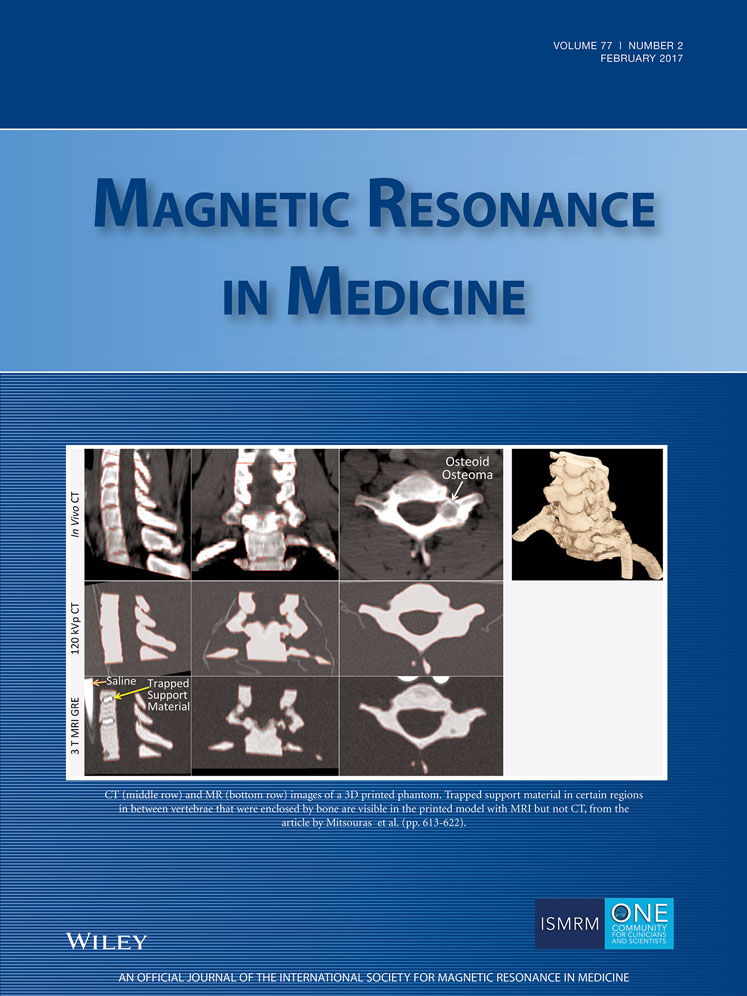Universal pulses: A new concept for calibration-free parallel transmission
Abstract
Purpose
A calibration-free parallel transmission method is investigated to mitigate the radiofrequency (RF) field inhomogeneity problem in brain imaging at 7 Tesla (T).
Theory and Methods
Six volunteers were scanned to build a representative database of RF and static field maps at 7T. Small-tip-angle and inversion pulses were designed with joint kT-points trajectory optimization to work robustly on all six subjects. The returned “universal” pulses were then inserted in an MPRAGE sequence implemented on six additional volunteers without further field measurements and pulse optimizations. Similar acquisitions were performed in the circularly polarized mode and with subject-based optimizations for comparison. Performance of the different approaches was evaluated by means of image analysis and computation of the flip angle normalized root mean square errors (NRMSE).
Results
For both the excitation and inversion, the universal pulses (NRMSE∼11%) outperformed the circularly polarized (NRMSE∼28%) and RF shim modes (NRMSE∼20%) across all volunteers and returned slightly worse results than for subject-based optimized pulses (NRMSE∼7%).
Conclusion
RF pulses can be designed to robustly mitigate the RF field inhomogeneity problem over a population class. This appears as a first step toward another plug and play parallel transmission solution where the pulse design can be done offline and without measuring subject-specific field maps. Magn Reson Med 77:635–643, 2017. © 2016 International Society for Magnetic Resonance in Medicine




